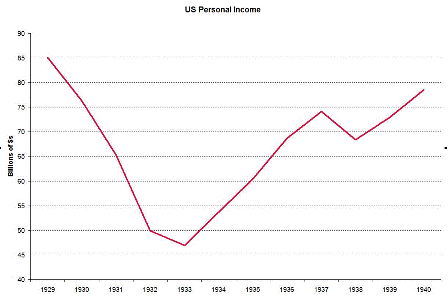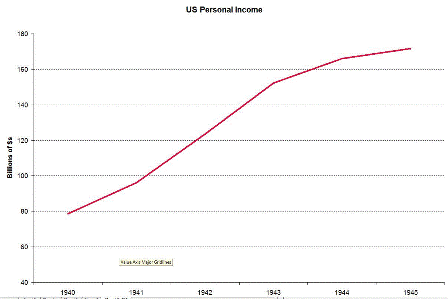[Skip to the end]
Thanks, they all have it wrong regarding quantitative easing.
Net financial assets of the non government sectors remain unchanged.
There is no ‘monetary’ consequence apart from the resulting somewhat lower long term interest rates.
And the idea that it helps delays fiscal responses that do help.
by Julian Callow
Mar 31 (FT) — As international pressure intensifies on the European Central Bank to print money by adopting a programme of aggressive asset purchases, it is worth questioning whether Europe has got its priorities in the right order. So far, the ECB has been doing most of the heavy lifting in terms of injecting stimulus into the euro area.
Looking ahead, it is preferable that opportun- ities to undertake radically further fiscal easing are fully exploited before requiring the ECB to go down the route taken by the Federal Reserve, Bank of England and Swiss National Bank (ie. undertaking “pure” quantitative easing via extensive asset purchases financed by the creation of new central bank money).
This implies quantitative easing is more powerful than fiscal and should be saved for last. Not true.
In short, if the euro area is to err on the side of being a little reckless in terms of policy,
Quantitative easing is totally tame, not reckless. It’s just part of the CBs role in setting the term structure of risk free rates.
it is preferable this be in a fiscal, rather than monetary, direction.
For the eurozone, with the national governments credit sensitive agents, fiscal is unfortunately the reckless pass under current institutional arrangements.
This is for three reasons.
First, well devised and appropriately targeted fiscal incentives can prove very efficient, both in terms of stimulating demand and even in timeliness. For example, a modest €1.5bn scheme to encourage new car purchases via subsidies to scrap older cars (just 0.06 per cent of German GDP) has already led to about 350,000 new orders being placed in Germany. That represents 11 per cent of German registrations last year.
Yes, fiscal works!
Second, the fiscal framework is much better established, including a possible exit strategy.
Just the thought of an exit strategy shows a lack of understanding of how aggregate demand works and is managed by fiscal policy. It also shows deficit myths are behind the statement.
For decades, economists have built up a good understanding of fiscal multipliers and lags. The cost of such measures is transparent,
There is no ‘cost’, only nominal ‘outlays’ by government.
unlike a strategy of central bank asset purchases, where the impact and exit strategy are uncertain and future costs are obscured.
Yes, few understand this simply thing. It’s about price (interest rates) and not quantities.
Third, for the euro area there is a particular reason why aggressive quantitative easing could prove hazardous.
It can’t be hazardous.
This results from the unique status of the ECB and euro as icons of European integration. Even though it may have happened more than 80 years ago, the collective memory of the hyperinflation experienced by Germany and Austria during the 1920s – and of its consequences, which ultimately gave birth to the euro – still casts a long shadow over European perceptions of paper money.
The mainstream believe that it is inflation expectations that cause inflation, and we pay the price via their errant analysis.
Here, we should not forget that, in contrast to the dollar, the pound and the Swiss franc, the euro has been in physical cash circulation for only seven years. As well, it is worth noting that the proportion of EU citizens saying they tend not to trust the ECB has tended to shift upwards – to 31 per cent in the most recent survey (autumn 2008), the highest in EMU’s history. This compares with 48 per cent saying that they tend to trust the ECB (source: Eurobarometer 70).
In short, were the ECB to adopt a strategy of aggressively printing money through an extensive asset purchase programme, this would risk significantly undermining the euro’s credibility, particularly if this strategy was not well communicated.
Credibility is way overrated!
That said, the ECB is in a neighbourhood where most of its peers have embarked on a strategy of aggressively printing money.
The term ‘printing money’ is a throwback to the gold standard and fixed FX in general where the CB prints convertible currency in excess of reserves. This has no applications with today’s non convertible currency.
This risks pushing up the euro on a trade-weighted basis further, at least in nominal terms, which would represent another negative shock to euro area exporters. In this context, if fiscal policy was used more aggressively as a means of providing new stimulus to the economy, it should seek in part to compensate businesses whose outlook could be further weakened by currency appreciation.
Increasing deficits does not strengthen a currency. If it did Zimbabwe would have the word’s strongest currency.
Without doubt, reaching agreement on sufficiently robust fiscal stimulus in Europe is harder to accomplish than a policy of leaving the bulk of policy stimulus up to the ECB.
True. And too bad the ECB doesn’t have any policy variables at hand to add to aggregate demand.
The measures, rather than having a small committee to determine the appropriate level of stimulus, must be decided by politicians, who face political constraints and competing interests. But the transparency that gives a strategy of fiscal stimulus its rel>ative appeal also hampers the ability of politicians to execute it. Also, we are presented with an adverse starting position, with the euro area budget deficit likely this year to be close to 6 per cent of GDP.
That’s the good news. The automatic stabilizers are causing the deficits to grow to the point where they will trigger a recovery. Hopefully before the point where the national governments become insolvent trying to fund themselves.
Nonetheless, this should not mean that the aggressive use of additional fiscal stimulus is insuperable. We have lived through desperate times, which call for desperate measures. Central banks, including the ECB, have already responded with far-reaching measures. In order to stimulate economic recovery in Europe, its political leaders need to take up the baton.
Europe could also assist its cause by several other measures. For one thing, it seems odd that the European Commission has launched “soft” excessive deficit procedures against several euro area countries. As well, European governments, including the European Commission, could do a much better job of outlining to the rest of the world, in a clear and concise way, the details of their stimulus actions so far. For, encompassing the full range of monetary and financial system support measures, these are far from being negligible – with the discretionary fiscal stimulus measures alone amounting to about 1 per cent of euro area GDP in 2009.
Julian Callow is chief European economist at Barclays Capital
[top]



